TEAM USA GOES TO THE FIM JUNIOR WORLD CHAMPIONSHIPS
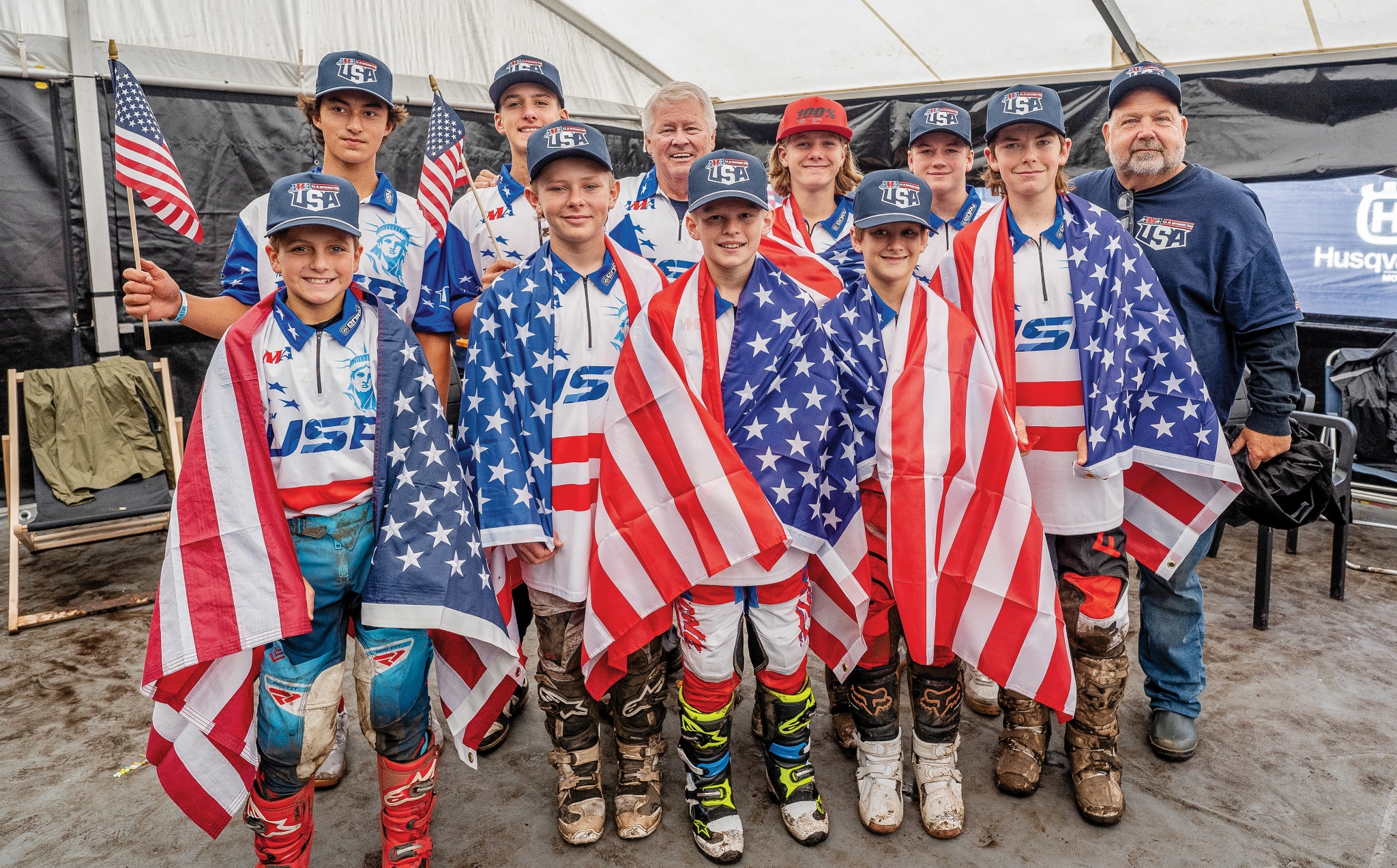 Team USA with Team Manager Jeff Cernic of Cernic’s Racing and AMA’s Mike Burkeen.
Team USA with Team Manager Jeff Cernic of Cernic’s Racing and AMA’s Mike Burkeen.
PHOTOS BY CAMWORKX
Since 2004, the FIM Junior World Championship has been a stepping stone for young riders looking to test their skills on the road to turning pro in the FIM World Motocross Championship. While Loretta Lynn’s stands out as the most popular amateur race in the USA, the Junior World Championship is the race that European and other foreign riders race to prove that they are on the fast track to joining the professional ranks. Of course, the two big amateur events are very different. Loretta Lynn’s is a week-long event with classes from 50cc to 450cc for kids as young as 4 years old and vet riders over 50 years old. The Junior World Championship is a one-weekend event with only three classes. The 65cc 10- to 12-year-old class, the 85cc 12- to 14-year-old class and the 125cc 13- to 17-year-old class. Anyone can sign up to represent their country at the Junior World Championship, but you still have to qualify for the motos.
IN 2010, THE AMA BEGAN TO SEND FULL TEAMS TO COMPETE ON THE WORLD STAGE. SINCE THEN, WE’VE ONLY SENT A FULL TEAM A TOTAL OF NINE TIMES, AND IN FIVE OF THOSE APPEARANCES, TEAM USA WON THE GOLD IN THE THE MINI MOTOCROSS DES NATIONS.
The FIM Junior World Championships are run by Infront, the same promoters who run the MXGP series and the Motocross des Nations. This event feels like a mini Motocross des Nations, with teams going all out to make their country proud on the world stage. Since 2004, every top MXGP rider has gone through the Junior World Championships before, making a career in the MXGP series. Ken Roczen, Marvin Musquin, Jeffrey Herlings, Jorge Prado, Tim Gajser, Jeremy Seewer, Tom Vialle and Kay de Wolf have all raced this event at one point or another. Although little known in the USA, you might be surprised that Zach Osborne won the 85 class in 2004. Blake Wharton won the 125 class in 2007, and Eli Tomac won the 125 class in 2009. Jett Lawrence, Hunter Lawrence, Chase Sexton, Michael Mosiman and Austin Forkner have raced in the Junior World Championships as well.
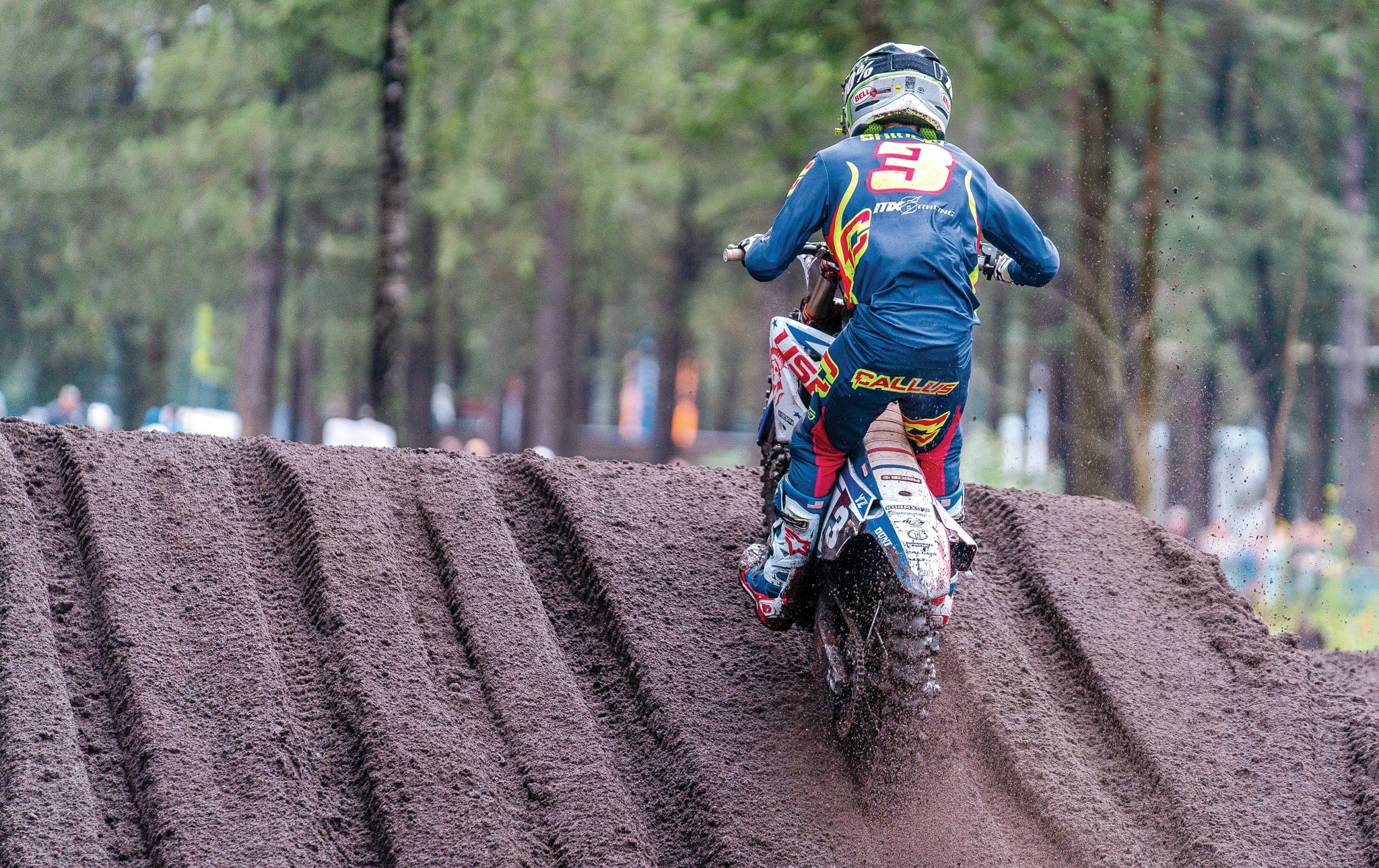 Joseph Shipley dealing with a rutted take-off.
Joseph Shipley dealing with a rutted take-off.
In 2010, the AMA began to send full teams to compete on the world stage. Since then, we’ve only sent a full team a total of nine times, and in five of those appearances, Team USA won the gold in the Nations category. MXA’s very own Josh Mosiman knows this event well, as he was part of the first winning team in 2010 when Joey Savatgy finished second in the 125 class, Josh finished 11th overall in the 85 class, and Jake Pinhancos won the 65 class. Even with Josh outside of the top 10, the combined scores gave Team USA the win at the Dardon-Gueugnon track in the rolling hills of France, just a few hours west of Geneva, Switzerland.
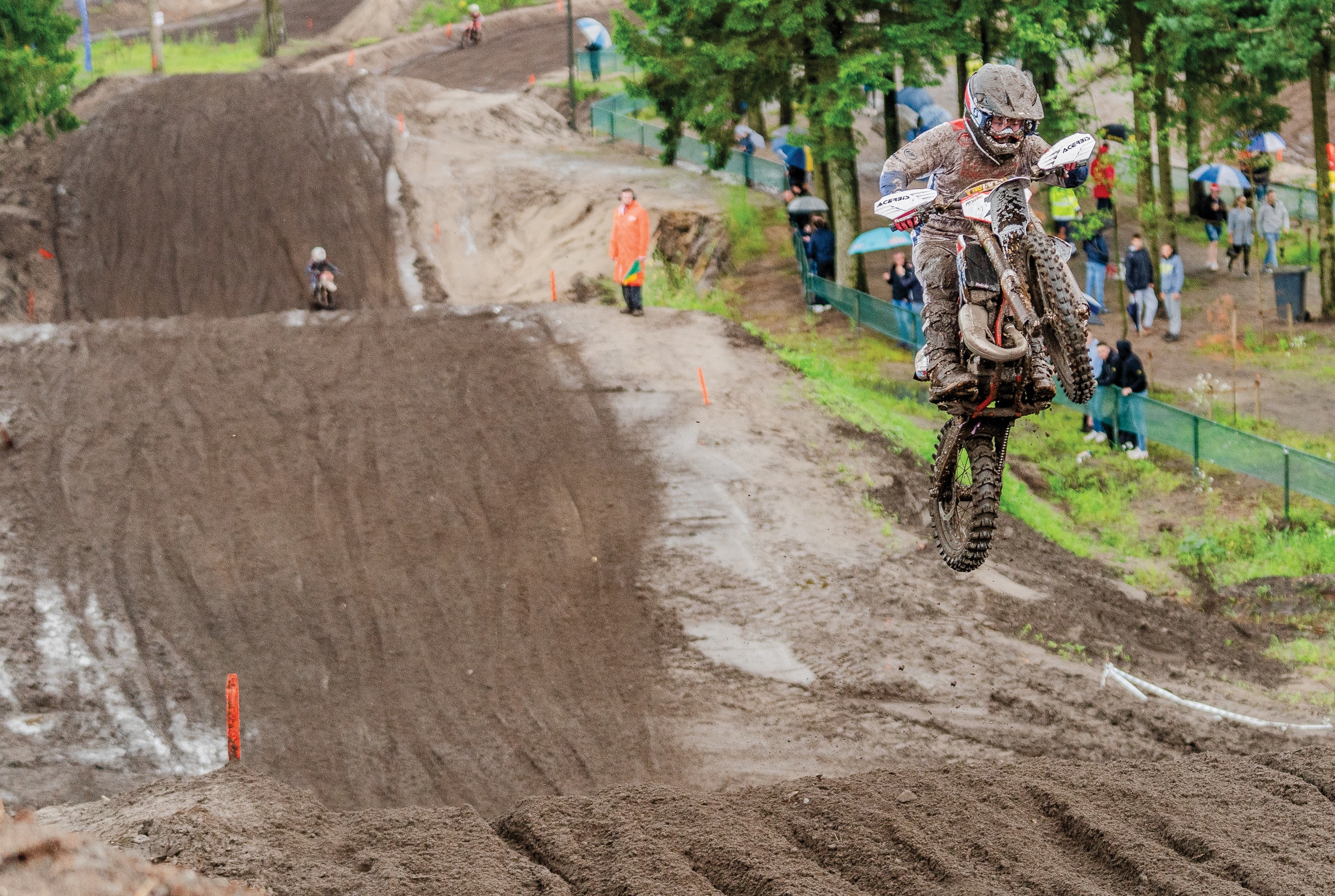 Easton Graves battling through the rain as he jumps the step-up.
Easton Graves battling through the rain as he jumps the step-up.
Josh was also part of Team USA in 2011 when the team won again in Cingoli, Italy, with Joey Savatgy winning the 125 class, Chase Bell (Zach Bell’s younger brother) finishing second in the 85 class, and Gabriel Jairala finishing 10th overall in the 65 class.
That year, Jorge Prado won the 65 class, with Enzo Lopes second and Hunter Lawrence fifth overall. Josh Mosiman was injured in 2012, but he was still helping Team USA in Bulgaria when Austin Forkner finished second in the 85 class and Team USA finished third in the Nations category. Josh’s last trip to this race was in 2013 when Team USA won in the Czech Republic with Aiden Tijero winning the 65 class, Chase Sexton finishing fourth in the 85 class, and Jarek Balkovic finishing sixth in the 125 class.
THE FIM JUNIOR WORLD CHAMPIONSHIPS ARE RUN BY INFRONT, THE SAME PROMOTERS WHO RUN THE MXGP SERIES AND THE MOTOCROSS DES NATIONS. THIS EVENT FEELS LIKE A MINI MOTOCROSS DES NATIONS, WITH TEAMS GOING ALL OUT TO MAKE THEIR COUNTRY PROUD ON THE WORLD STAGE.
For 2024, the Junior World Championships took place in Holland with almost 40 different countries represented and over 300 riders in attendance, all trying to qualify into just three classes. One major difference between the Junior World Championships and the Motocross des Nations is that you can run multiple riders in each class. This year, Team USA brought three riders for the 65cc class: Joey Vicari, Austin Keller and Jaydin Smart. We had four riders for the 85 class: Braxtyn Mes, Wyatt Duff, Easton Graves and Chase Dashiell. There were three riders for the 125 class: Brennon Harrison, Chace Lawton and Joseph Shipley.
Along with the normal race jitters of representing your country, this unique event brings more pressure than these young riders have ever felt before. It’s hard to stick to your normal race-day routine when you fly overseas to a foreign land with just your gear bag and a few hard parts. Plus, you’re not on familiar equipment because you’re borrowing a bike. The food is different, and not everyone is speaking English. Not to mention that being on Team USA automatically places a target on your back.
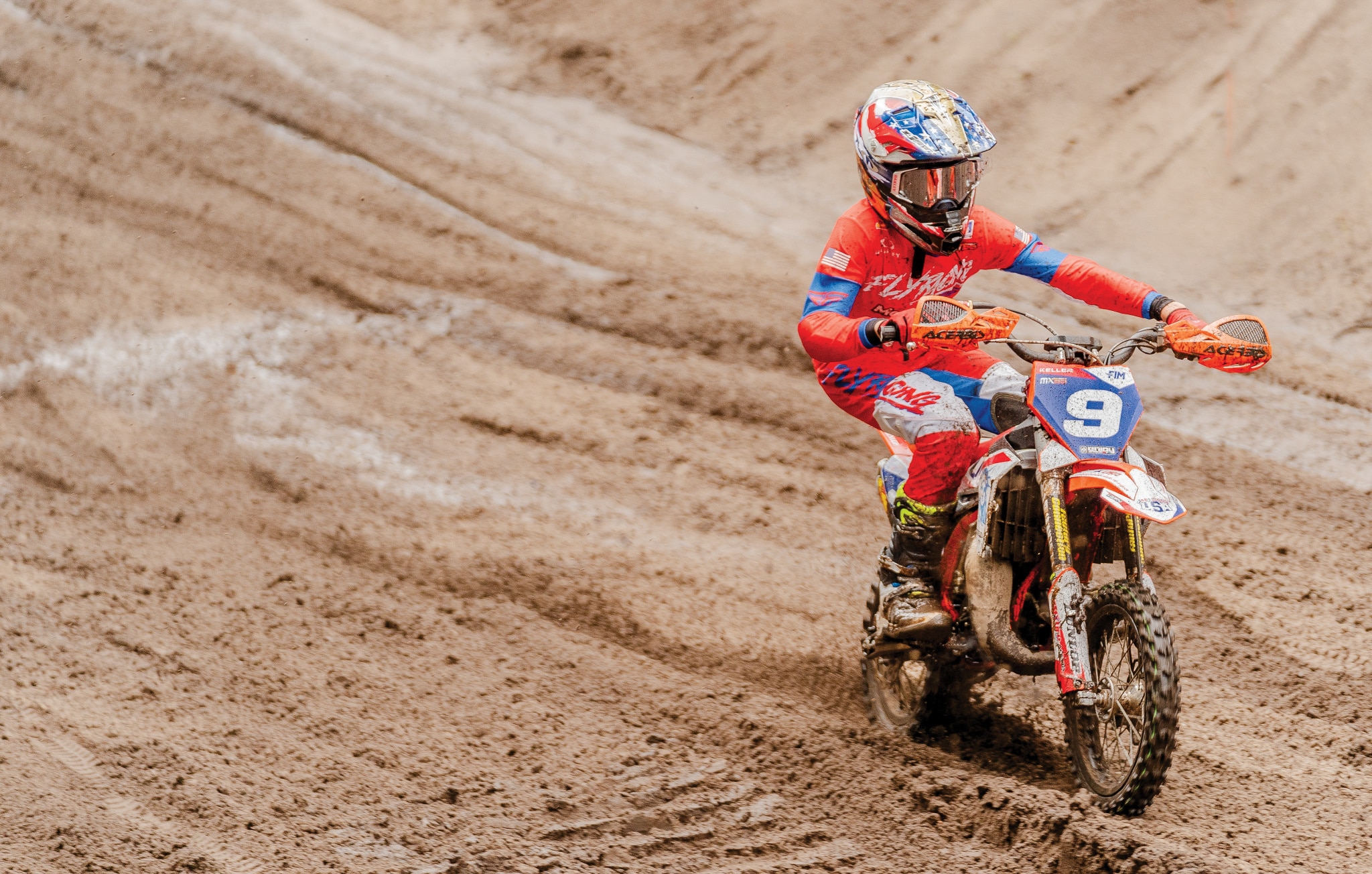 The wet sand was extra tough for the 65cc riders. Austin Keller was one of the taller riders in the class.
The wet sand was extra tough for the 65cc riders. Austin Keller was one of the taller riders in the class.
Back home in the States, every amateur National is run by a different promoter, which leads to different schedules and processes. In Europe, the FIM Junior World Championships are run exactly the way the Motocross Des Nations is run. The riders have free practice, timed qualifying and LCQ races on Saturday. Then, the racers who qualified for Sunday’s racing get a 20-minute free practice and two motos. The 65cc race is 12 minutes plus two laps, the 85cc class gets 20 minutes plus two laps, and the 125 class races two 25-minute races plus two laps. As with its professional MXDN counterpart, each class will dub the winner a World Champion, but the overall team trophy is what everyone is most focused on.
Amateur American motocross racers don’t get a ton of experience racing in the sand. We do have sand tracks in the United States, but none of the big amateur Nationals are on sandy courses, which means these riders normally don’t train on the bottomless sand pits that they have in Holland, so this race is a true test of sand riding skill for every young rider. Like at the MXGP series, the track is prepped for Saturday’s qualifying, but it isn’t prepped too much for Sunday, leaving most of the bumps and berms built up from the day before.
There are also strict starting-line procedures that match the MXGP series and that are completely different from AMA-sanctioned events. The major difference is riders aren’t allowed to have any help on the starting gate. Once they leave the staging area and head out on their sight lap, it is incumbent on the racers to get their own starting picks ready to race.
FOR 2024, THE JUNIOR WORLD CHAMPIONSHIPS TOOK PLACE IN HOLLAND WITH ALMOST 40 DIFFERENT COUNTRIES REPRESENTED AND OVER 300 RIDERS IN ATTENDANCE, ALL TRYING TO QUALIFY INTO JUST THREE CLASSES. WHEN THE RAINS CAME!
A major obstacle throughout the entire race weekend was the rain! In a matter of a few short hours on practice day, the entire venue was flooded, causing a major shift in the operations for the rest of the event. Saturday’s practice was shortened to just two sessions: one free practice and one qualifying session. The riders were forced to learn the track and throw down a lap time to get into the main event. For Team USA, practice had its ups and downs. All three 65 riders, as well as Wyatt Duff and Chase Dashiell in the 85cc class, made it to the mains through timed qualifying; however, Braxtyn Mes and Easton Graves in the 85cc class and all three Americans in the 125cc class failed to qualify and were forced into the LCQ races.
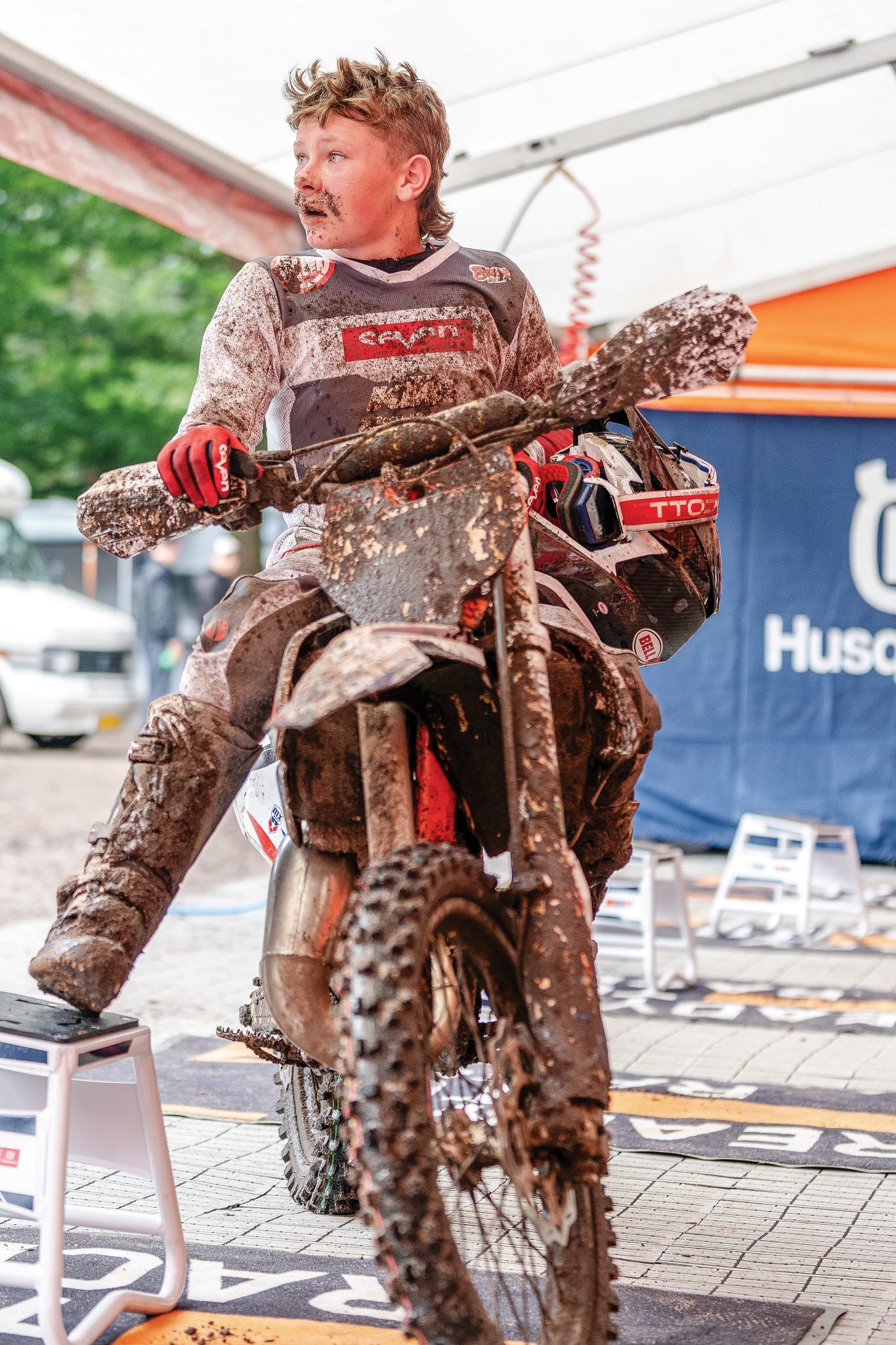 Easton Graves after a muddy qualifying session.
Easton Graves after a muddy qualifying session.
As if the LCQ races didn’t bring enough pressure, the skies opened up and the rain returned. The deep and muddy conditions were brutal, especially for the small-wheel-based machines that were fighting for the last four transfer spots into Sunday’s motos.
Easton Graves and Braxtyn Mes were the first Americans in the LCQs. When the gate dropped, both racers had poor starts and were forced to work their way through the pack. As the laps clicked off, Mes made up time on the leaders, and with two laps to go, Mes had made his way into the top four, but he did not stop. By the end of the race, Mes took the win, while, unfortunately, his teammate Graves had no such luck. His weekend was over early.
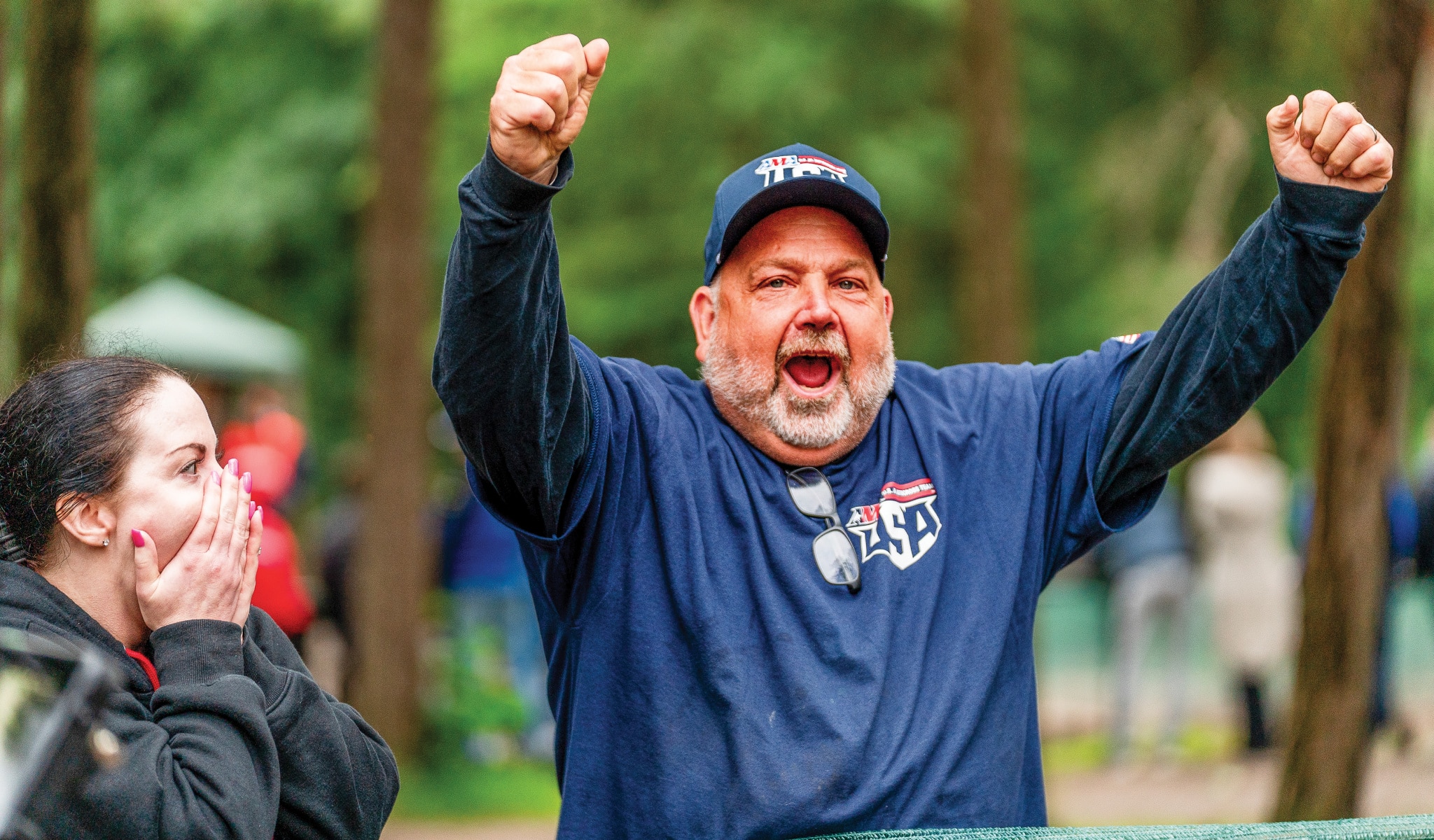 Jeff Cernic is most famous for owning Cernic’s Racing. Travis Pastrana rode for his Cernic’s Suzuki team back in the day.
Jeff Cernic is most famous for owning Cernic’s Racing. Travis Pastrana rode for his Cernic’s Suzuki team back in the day.
In the 125 class, all three riders for Team USA were buried in the pack. As the laps clicked off, Brennon Harrison began catching the front of the pack as he passed multiple riders on each lap. By the time the checkered flag waved, Harrison had finished an impressive third place, securing a spot in the 125 main-event motos. Sadly, the weekend was cut short for Chase Lawton and Joseph Shipley.
GIVEN ALL THE OBSTACLES AND CHALLENGES THE TEAM HAD TO FACE TO CROSS THE POND AND RACE ON FOREIGN SOIL, TEAM USA REPRESENTED OUR COUNTRY WITH PRIDE.
On Sunday morning, there were seven Americans in the big show. The first moto of the morning was the 65cc class, where Jaydin Smart, Joey Vicari and Austin Keller started things off for Team USA. All three riders struggled off the start, but halfway through, Jaydin Smart had worked his way into the top five, while Joey Vicari and Austin Keller ran in the top 15. Unfortunately, Smart went down and fell way back. Team USA snagged a ninth place from Vicari, a 13th from Keller and a 15th (due to the crash) for Jaydin Smart.
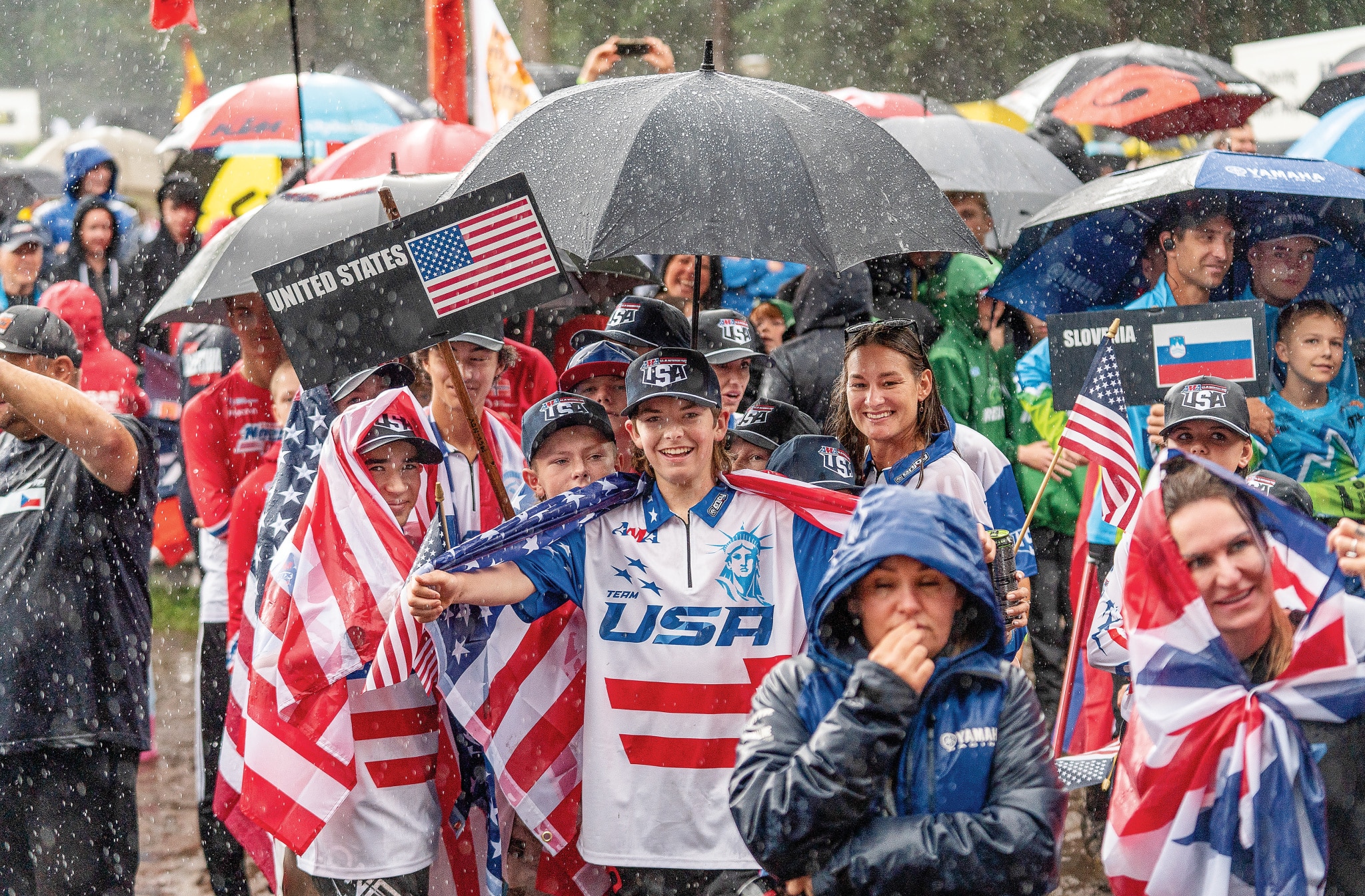 Despite the rain, the racing (and opening ceremony) goes on!
Despite the rain, the racing (and opening ceremony) goes on!
Next up was the 85cc class, where it was Braxtyn Mes, Wyatt Duff and Chase Dashiell’s turn on the World’s stage. As the gate dropped, the boys fought hard to overcome dismal starts and made passes throughout the challenging sand track. Wyatt Duff ended up with an impressive fifth. Braxtyn Mes cracked the top 10, finishing ninth, and Chase Dashiell ran in the top 10 early before a crash took him back to 25th.
In the 125cc class, the lone American, Brennon Harrison, also had a tough start with his outside gate pick. He made his way into the top 15 early on before setbacks landed him 23rd. Team USA needed big improvements in the second motos if they were to have a shot at getting on the podium.
The first to answer the challenge were the 65cc riders who all improved on their moto one scores. Austin Keller scored seventh, Joey Vicari was sixth, and Jaydin Smart stayed on two wheels to score fifth place in the second moto. Our 65s ended up being the strongest finishing class for Team USA. The 85cc finishes were up and down for Team USA. Mes and Dashiell improved their moto one scores with a sixth and 18th, but Duff had some crashes that resulted in a 14th-place finish.
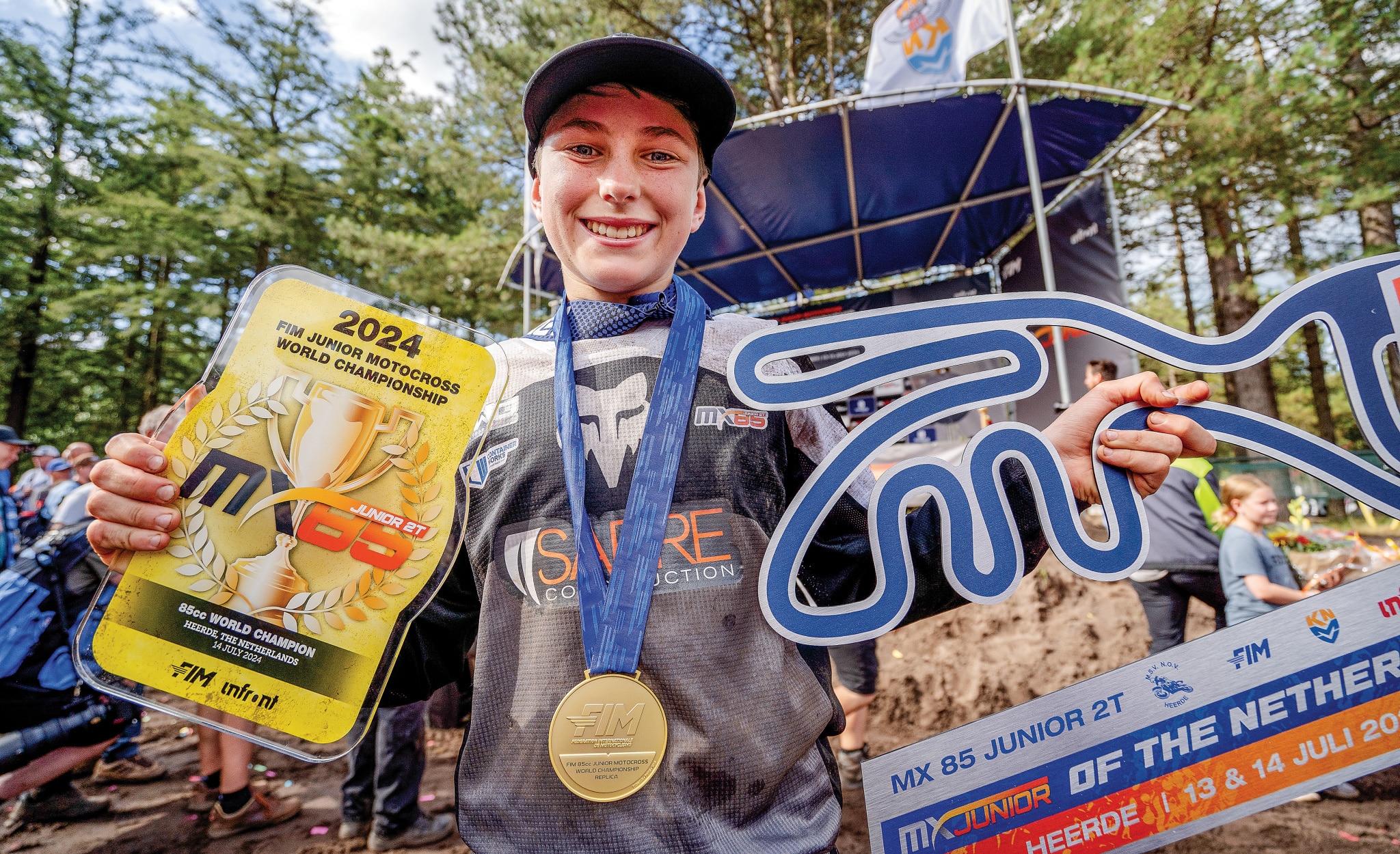 New Zealand’s Levi Townley, son of former AMA and MXGP pro Ben Townley, ended up winning the 85cc Junior World Championship.
New Zealand’s Levi Townley, son of former AMA and MXGP pro Ben Townley, ended up winning the 85cc Junior World Championship.
Heading into the final moto of the weekend, Team USA was tied for second in the overall Nations category based on Joey Vicari’s fifth overall in the 65 class and Braxtyn Mes’ sixth overall in the 85 class. However, with a tough first moto for Brennon Harrison, it was going to be difficult to end up on the podium as a country. Harrison battled back from a tough start to work his way through the pack. In the end, he improved his overall finish by scoring a 16th, but it was not enough for Team USA to remain on the podium, as they slipped back to fifth place overall.
Given all the obstacles and challenges the team had to face to cross the pond and race on foreign soil, Team USA represented our country with pride. Although the results were not what they were hoping for, the opportunity these young men had to represent something much larger than themselves was worth the effort, not to mention the unforgettable memories they created along the way.






Comments are closed.